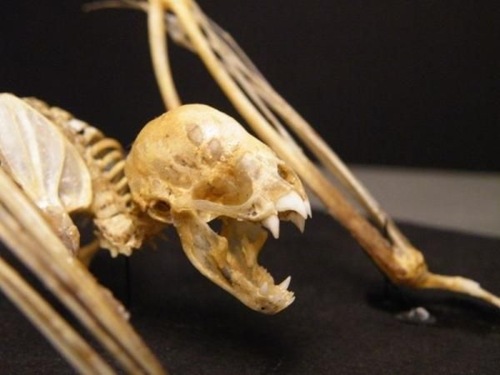
10 Cryptids More Terrifying than the Mongolian Death Worm
By Yohani Kamarudin, Environmental Graffiti, 8 August 2012.
They haunt our nightmares and fuel countless Internet stories. They make us shiver with fear and giggle with delight. These are cryptids, a catchall term for creatures whose existence has been posited but is highly unlikely, like the Mongolian Death Worm or the Loch Ness Monster. These creepy beasties have worked themselves into our imaginations to the point where they've become almost as familiar to us as cats and dogs.
Here’s a list of ten mythical animals - some based in fact, some completely imaginary - that we think are far more terrifying than the Mongolian Death Worm. Take a look and see if you agree!
An artist's interpretation of a Mongolian Death Worm. Photo: Pieter Dirkx.
Before we get to the list, let’s have a quick look at the scary beast that inspired it, the Mongolian Death Worm itself. This slithering creature is definitely like something from a nightmare - reputably able to spit deadly corrosive acid and kill from afar with an electric shock. The Worm is reported to live in the Gobi Desert of Mongolia, where it is said to appear when the ground is muddy from rain.
As with all cryptids, there is no proof that the Mongolian Death Worm exists or has ever existed, but that doesn’t stop the speculation from abounding. After all, why let the facts get in the way of a good monster? Now, let’s get on with describing a few more nasty creatures that we think are even more frightening than this one.
10. Yacumama
A Brazilian postcard circa 1932, featuring what looks like a giant snake. Photo: Unknown.
Many people are terrified of snakes. So you can imagine the fear inspired by the mythical giant anaconda of South America, known to some Peruvians as 'Yacu-mama' or 'mother of the water'. Normal anacondas can grow to an impressive 6 meters (20 feet) long, but, according to believers, the giant anaconda can reach 50 meters (164 feet) or more in length! It’s said that the Yacumama lives in the waters of the Amazon and will swallow anyone who dares to come within snacking distance!
As far back as the time of the first European explorers of South America, many people have claimed to see giant anacondas. So far, however, no one has produced any proof of this terrifying creature's existence - despite a reward offer of $50,000 from the Wildlife Conservation Society for a live specimen. In 2009, a father and son duo from Belfast claimed to have captured a giant snake on camera, but scientists remain unconvinced.
9. Akkorokamui
A 19th century illustration of a giant squid. Photo: Alphonse de Neuville.
Called the Akkorokamui in Japan, Kraken in Europe, or simply the giant squid in other parts of the world, this cryptid is equally terrifying by any name. Imagine being a sailor and seeing a nest of huge tentacles slithering their way aboard your ship before pulling you and your entire vessel beneath the waves. In the early days of seafaring, stories were told, and believed, of this actually happening. Quite an incentive to stay on dry land!
These days, we know the tales of killer tentacles to be false… Or do we? The aptly named colossal squid (Mesonychoteuthis hamiltoni) was discovered during the 1920s. Although specimens of this species found so far have been small and immature, scientists believe adults may reach up to 12–14 meters (39–46 feet) long. So far, all evidence of even larger squid has been anecdotal, but the ocean is a vast, deep place. Who knows what monsters lurk in its depths, waiting to be discovered?
8. Giant Vampire Bat
A vampire bat. Photo: Desmodus.
"The fear that flies by night" is the translation of “Fangalabolo”, the name of a giant bat with a 1.5-meter (5-ft) wingspan that some believe terrorizes the island of Madagascar. In several cultures, giant bats appear as mythical creatures, each scarier than the next. In Cameroon, the creature is called the “Olitiau” and is reported to have a 3.5-meter (12-ft) wingspan. In Indonesia, it is known as an “Orang-bati”, a human/bat hybrid that kidnaps children. But perhaps most terrifying of all are the tales of giant vampire bats that survive by drinking copious amounts of blood - and sometimes human blood.
As in the case of the giant squid, there is some truth behind the legends of giant bats. There are fossilized remains of a giant vampire bat species called Desmodus draculae, which reportedly lived in the Pleistocene era. Interestingly, the existence of a type of large vampire bat similar to Desmodus draculae has also been dated at only 300 years ago. What’s more, some scientists think these huge creatures may even still be alive today, waiting undetected in the jungles of South America. A scary thought for any would-be explorers!
7. Yeti
Dr. Biswamoy Biswas (zoologist) examines a purported Yeti scalp in 1954. Photo: John Angelo Jackson.
Probably one of the best-known cryptids of all time, the Yeti (or Abominable Snowman) has been capturing our imaginations for well over a century and a half - possibly longer if anthropologist H. Siiger is correct in his belief that it was part of the mythology of pre-Buddhist Himalayans. The horror of this beast comes not only from its reportedly massive size and fearsome appearance, but also from the superstition that surrounds it. Apparently, seeing one portends death.
Since mountaineering became popular in the 20th century, more and more people claimed to have seen the Yeti itself, or at least its tracks. Even trustworthy witnesses like Sir Edmund Hillary and Tenzing Norgay reported seeing giant footprints, although Hillary later grew increasingly sceptical about their origin. These days, it is suggested that Yeti sightings are in fact a simple case of misidentified wildlife; most likely, monkeys or bears. However, expeditions to find the mysterious creature continue.
6. Hodag
A 19th-century photograph supposedly showing a Hodag. Photo: Unknown.
Here’s an unpleasant sounding animal: "[It had] the head of a frog, the grinning face of a giant elephant, thick short legs set off by huge claws, the back of a dinosaur, and a long tail with spears at the end." This description comes from an 1893 newspaper account on the discovery of the Hodag in Rhinelander, Wisconsin [USA]. The Hodag was supposedly a creature so tough that they had to use dynamite to kill one!
Unlike some of the other cryptids in this article, there was never any truth behind the Hodag story. The whole thing was made up by a local prankster named Eugene Shepard. This joker even claimed to have captured a live Hodag, which he displayed to the public. The hoax worked pretty well, too, until a group from the Smithsonian Institute announced their plans to examine the creature. Those meddling scientists! Still, the Hodag lives on as the official symbol of Rhinelander - and was even featured in an episode of Scooby-Doo!
5. Black Shuck
A photographic interpretation of a Black Shuck. Photo: Ian Harvey.
A ghostly black dog, known as Black Shuck, has been striking terror into the hearts of East Anglia’s inhabitants for centuries. Some say its very name is derived from “scucca”, an Old English word meaning demon. If this were true, it would certainly suggest that seeing one of these creatures is a bad omen. Indeed, it is said that once you have gazed into the red, glowing gaze of a Shuck, you will die or fall ill not long afterwards. According to the tales, the dog can be normal sized or as big as a horse - and it has even appeared headless!
We don’t know how the Black Shuck story got started, but this seems to be one of those cryptids based purely in fantasy and perhaps a few overactive imaginations. But just in case, if you’re ever walking down a lonely road in England’s Norfolk or Essex and you hear canine footsteps padding along behind you, whatever you do - don’t turn around!
4. Bunyip
A 19th-century engraving of a Bunyip and its victim. Photo: J. Macfarlane.
Long before European settlers arrived, the Australian Aborigines told stories of monsters that lurked in swamps and waterholes, ready to pounce on unwary victims. There was no exact description of this monster, but it is known as a “Bunyip” because, according to a 19th-century book on Aborigines, they “appear to have been in such dread of it as to have been unable to take note of its characteristics.” However, all agreed that it was a frightening sight indeed.
Modern explanations for the Bunyip myth say it may have originated from now-extinct marsupials, which could often be very large in size. A skull displayed by the Australian Museum in Sydney, said at the time to be a Bunyip’s, drew a great many visitors. However, experts (or, as we like to call them, spoilsports) at the time claimed that it was only the deformed skull of a calf or foal.
3. Beast of Bladenboro
The alleged Beast of Bladenboro may have in fact simply been a cougar. Photo: moocatmoocat.
There was a time when the people of Bladenboro in North Carolina [USA] were afraid to walk the streets at night, and hunters prowled its forests looking for a bloodsucking monster. The so-called Beast of Bladenboro first came to light when a farmer reported seeing his dog dragged into the brush by a large catlike animal. Creepier still, two dogs were found dead a couple of days later, supposedly completely drained of blood. Then two more dogs were attacked. It was enough to incite panic in the town and prompt journalists all over the nation to cover the story of the mysterious beast.
In the end, the Beast of Bladenboro did end up being a killer - indirectly - as the bobcats in the area were hunted without mercy on suspicion of being the dog-killing culprit. Ultimately, like the Hodag, the Beast of Bladenboro seems to have been a publicity stunt, orchestrated at least partly by the mayor, W.G. Fussell, to bring some attention to a small town in need of a boost. It’s possible that there was a wild animal on the loose that killed the dogs, but certainly nothing that merited the fear and chaos that the Beast of Bladenboro once inspired.
2. Jersey Devil
A 1909 illustration of the Jersey Devil. Photo: Philadelphia Newspaper, 1909.
If the Hodag and Bladenboro Beast terrorized small towns, the Jersey Devil had whole cities quaking in fear. This terrifying creature reportedly had a dog’s face, kangaroo’s body, bat wings, clawed hand, cloven hoofs and a forked tail. Perhaps the most frightening detail, though, was its alleged ‘blood-curdling scream’. Some say the beast was the thirteenth child of a witch and the devil himself. Now what could be creepier than that?
For a week during January 1909, the Jersey Devil was supposedly sighted all over New Jersey, Pennsylvania and other places. In the Delaware Valley, newspaper coverage of the monster caused so much panic that schools closed and people were too scared to go to work. The Jersey Devil has been variously explained as a remnant dinosaur genus, a mud-covered man living in the wilderness, and a yet-to-be-discovered animal species. Whatever it was, it certainly terrified a lot of people.
1. Man-eating Tree
A 19th century illustration of a Ya-te-veo. Photo: J. W. Buel.
What could be scary about a tree, right? They’re so lovely and green, they make oxygen, and they are home to little squirrels and birds. Also, though, they can eat you! At least if you’re unlucky enough to sit under a carnivorous Ya-te-veo plant. Or so the story goes. Mentioned in J.W. Buel’s 1887 book Land and Sea, the Ya-te-veo is supposed to live mainly in Central and South America and on the island of Madagascar.
Fortunately for nature lovers everywhere, this story seems to be pure myth, with the scientist Willy Ley writing in 1955 that the man-eating tree was the stuff of fiction. That doesn’t mean we can’t have nightmares about it though, does it?
We found all these cryptids to be scarier than the Mongolian death worm, but also a lot of fun to read about. Of course, in the real world there are lots of animals that may not be supernatural but are just as strange and fascinating as their mythical counterparts. And that's to say nothing of all the curious and terrifying creatures that are still out there waiting to be discovered.
Sources:
3. Giant Squid
7. Hodag
9. Yacumama
10. Giant anaconda
12. Yeti
14. Black Shuck
15. Bunyip
18. Jersey Devil
19. Man-eating tree

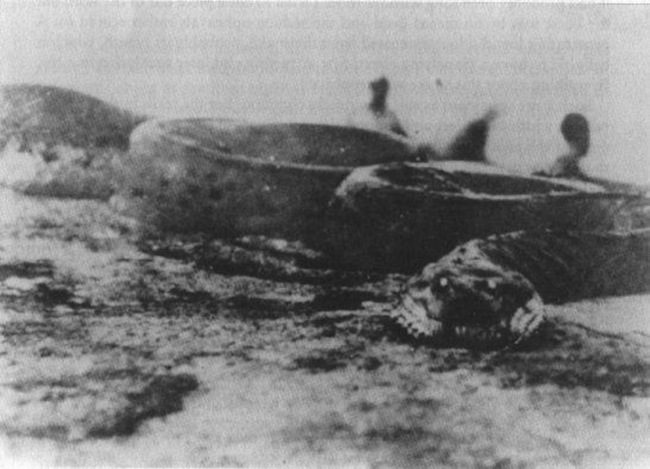
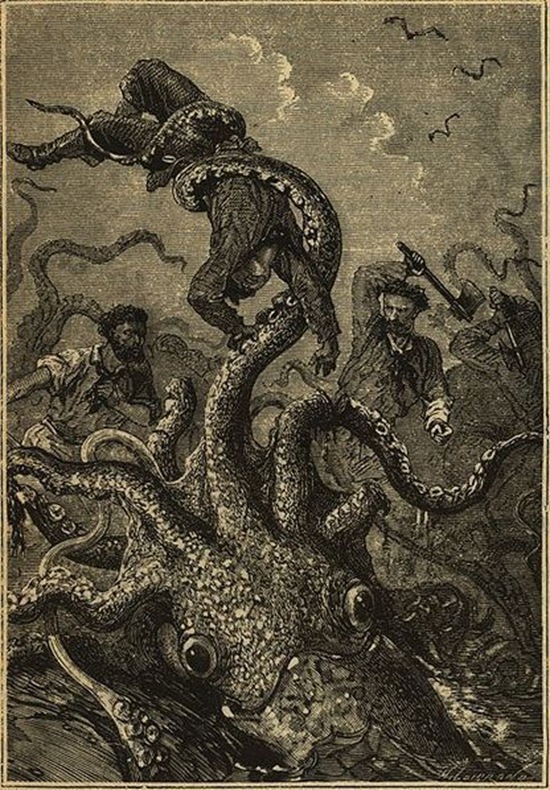
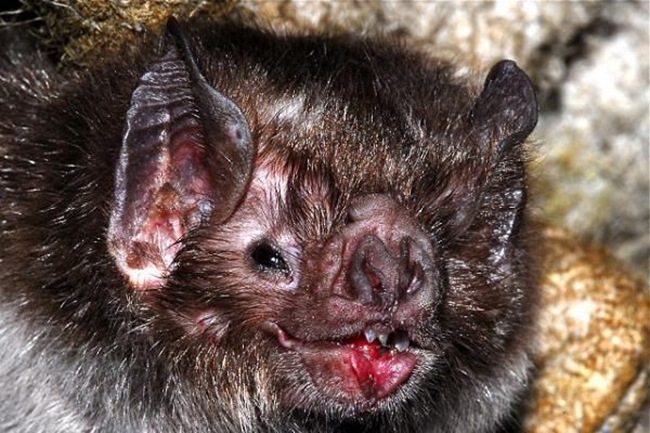


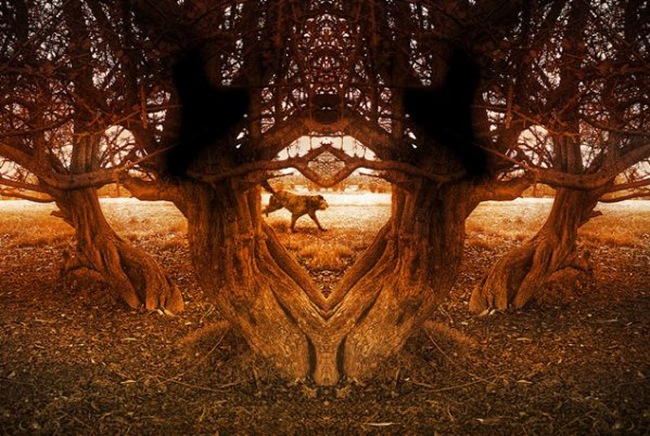
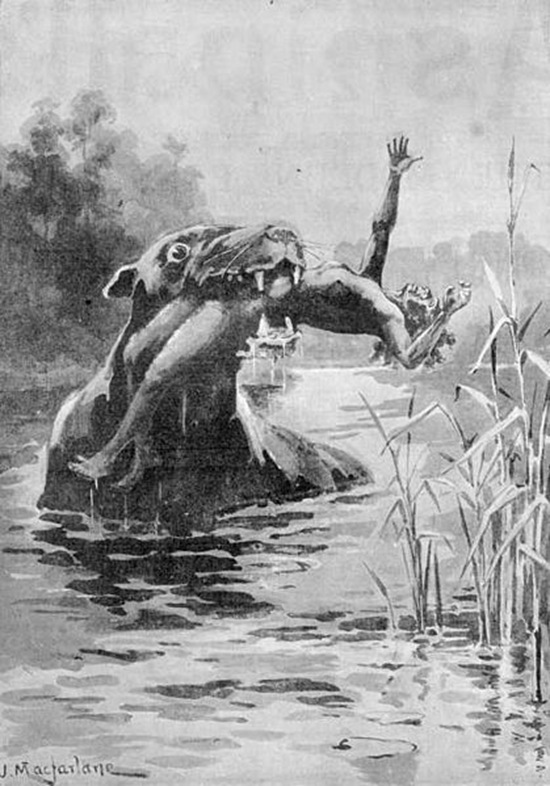

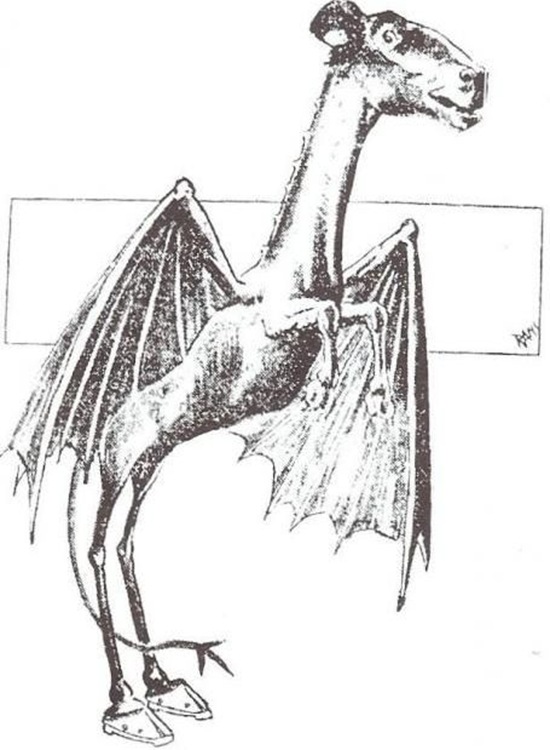
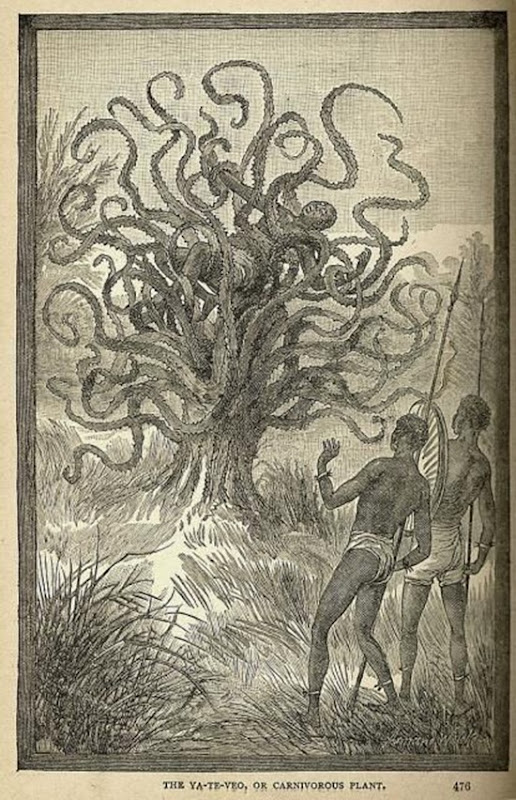
No comments:
Post a Comment
Please adhere to proper blog etiquette when posting your comments. This blog owner will exercise his absolution discretion in allowing or rejecting any comments that are deemed seditious, defamatory, libelous, racist, vulgar, insulting, and other remarks that exhibit similar characteristics. If you insist on using anonymous comments, please write your name or other IDs at the end of your message.